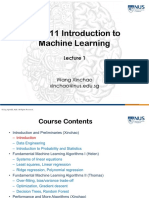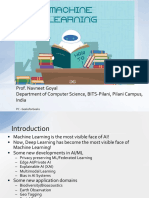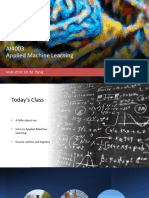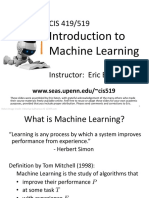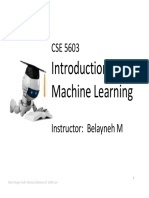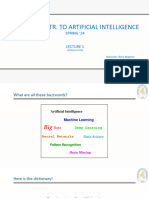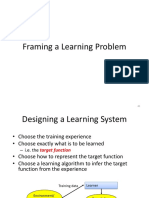0% found this document useful (0 votes)
17 views48 pages01 Introduction ML
The document provides an introduction to machine learning, defining it as the study of algorithms that improve performance through experience. It outlines various applications of machine learning, including speech recognition, autonomous vehicles, and healthcare, while differentiating between types of learning such as supervised, unsupervised, and reinforcement learning. Additionally, it covers the evolution of machine learning from its historical roots to modern advancements like deep learning.
Uploaded by
hojise5329Copyright
© © All Rights Reserved
We take content rights seriously. If you suspect this is your content, claim it here.
Available Formats
Download as PPTX, PDF, TXT or read online on Scribd
0% found this document useful (0 votes)
17 views48 pages01 Introduction ML
The document provides an introduction to machine learning, defining it as the study of algorithms that improve performance through experience. It outlines various applications of machine learning, including speech recognition, autonomous vehicles, and healthcare, while differentiating between types of learning such as supervised, unsupervised, and reinforcement learning. Additionally, it covers the evolution of machine learning from its historical roots to modern advancements like deep learning.
Uploaded by
hojise5329Copyright
© © All Rights Reserved
We take content rights seriously. If you suspect this is your content, claim it here.
Available Formats
Download as PPTX, PDF, TXT or read online on Scribd
/ 48

















